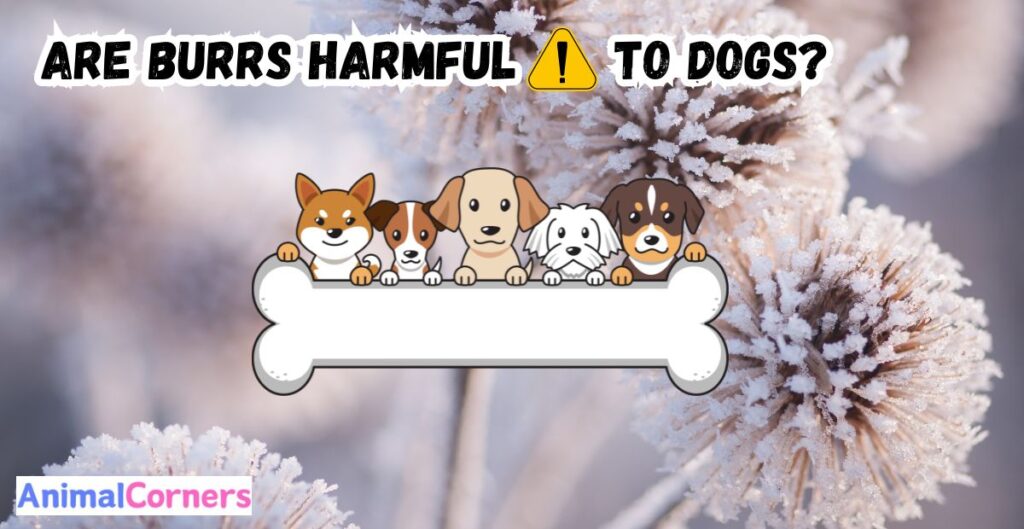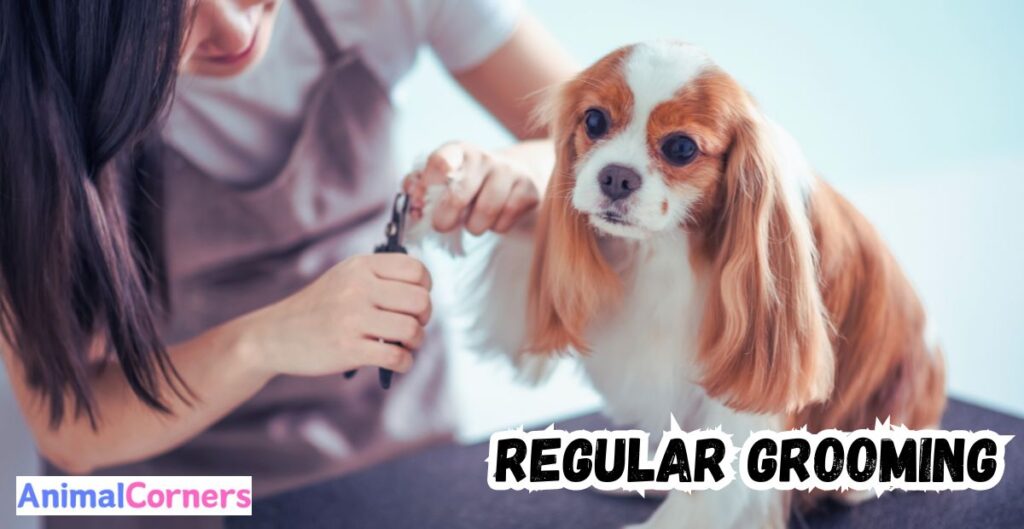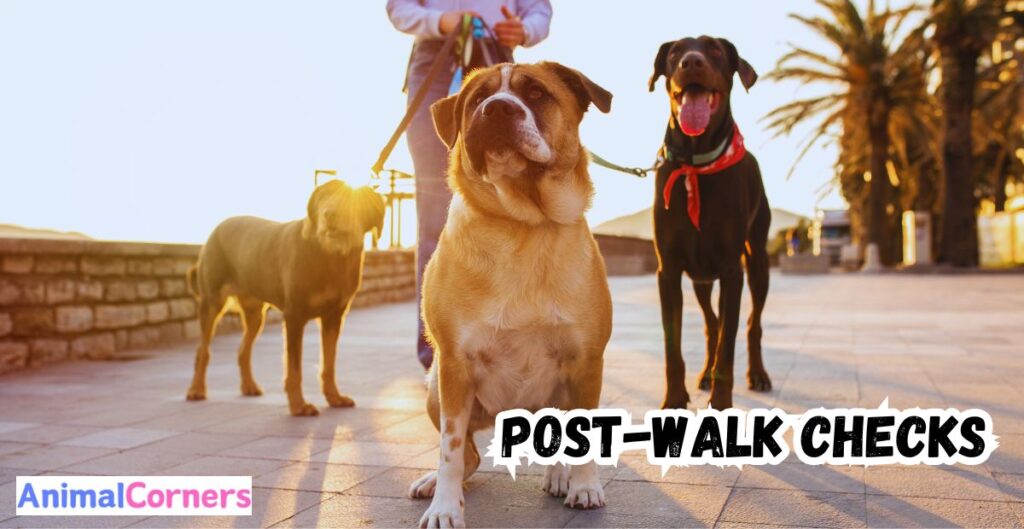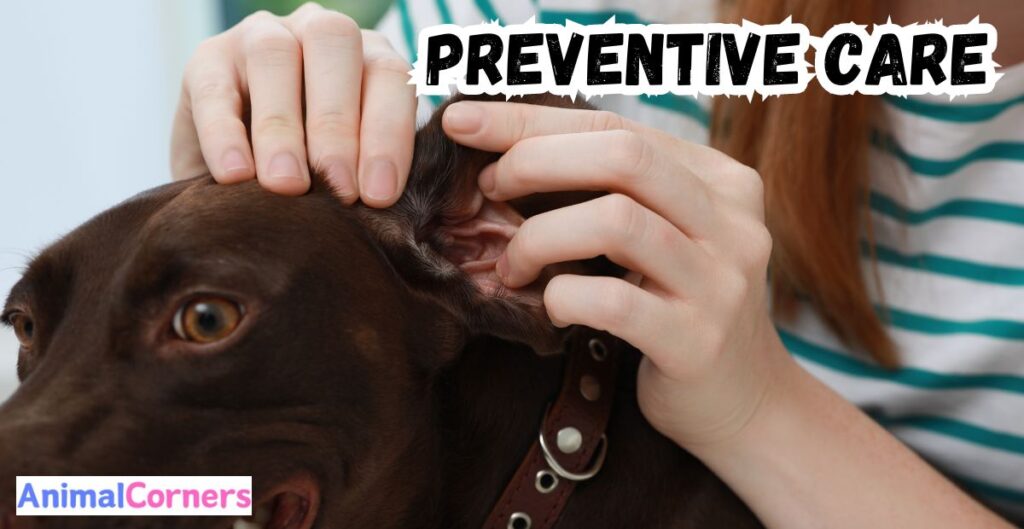How to Prevent Burrs on Dogs?

This insightful post will go over doable strategies to prevent burrs from getting into your dog’s fur. Burs commonly cause discomfort for pet owners and their four-legged companions. Burrs are thorny seeds or seed pods from plants that can cause discomfort or even injury to dogs if they become tangled in their coats and are not removed.
We’ll discuss the need for regular grooming, the benefits of donning protective gear, and how to choose the safest outside walking spots to lower the risk of burrs.
If your dog’s fur gets tangled, we’ll also provide tips on How to Prevent Burrs on Dogs safely so that your friend may return from their outdoor activities happy, healthy, and comfortable. Join us as we tackle this thorny issue head-on and ensure you and your canine companion have enjoyable, burr-free travels.
Are Burrs Harmful to Dogs?

Indeed, burrs may be dangerous for dogs. Burrs can be more than just an irritation, even if they don’t always have dangerous consequences. These bothersome tiny plant seeds have the potential to become tangled in your dog’s fur, causing pain and discomfort.
Burrs can cause matting of the fur, which can drag on the skin and cause pain or damage if they are not removed. When a dog attempts to remove the burrs by chewing or licking them, they may swallow some of the burr, which could lead to internal problems.
Consequently, it’s critical to inspect your dog’s coat following play or walks in burr-prone areas and to remove burrs as soon as possible to prevent damage.
How to Prevent Burrs on Dogs – Step by Step Guide by AnimalCorners
Understand the Environment
It’s critical to understand where burrs are most likely to be found to protect your dog from them. Burrs are happiest in open spaces, wooded areas, and areas near bodies of water like lakes or rivers.
It’s important to know the kinds of plants with these sticky seeds and their location. You can avoid these regions when taking a stroll with your pet if you know where these plants are. This will save you the trouble of brushing off burrs from their fur, which will increase the enjoyment of your walks together.
Regular Grooming

Maintaining your dog’s coat will help keep burrs from adhering to them. Here’s how to accomplish it:
- Brush Their Fur Often: Make use of a brush appropriate for the fur kind of your dog. Brushing facilitates keeping their coat sleek. It is more difficult for burrs to snag on their smooth fur.
- Trim Hair in Key Areas: When your dog walks or plays outside, the fur on their paws, legs, and belly can quickly gather burrs. Removing these parts can be very beneficial. It implies that there is less hair for burrs to adhere to, decreasing the possibility of them becoming twisted.
Protective Clothing for Your Dog
Wearing specific garments for your dog is an easy approach to protect them against burrs. Consider items such as boots or jackets designed specifically for canines.
These serve as a shield in addition to being attractive. It is far more difficult for those prickly burrs to cling to your dog’s fur when they are wearing them. Envision strolling through a field or next to some bushes.
Your dog won’t stick to those annoying burrs if they are wearing boots or a vest. This implies that your dog can play and explore without any difficulties, and you won’t have to bother about removing burrs from their fur later. It’s an easy approach to guarantee that your playing and walks are enjoyable and burr-free.
Post-Walk Checks

Following your stroll with your pet, it’s critical to examine them for any burrs they may have acquired. You should be meticulous since burrs can hide in places you might not think to look. What you can do is as follows:
- Start with a Pat-Down: Use your hands to gently pat your dog’s fur. This aids in feeling through their coat for any burrs that may be tangled. Keep a close eye out for burrs’ favorite hiding places, which include beneath your dog’s collar, behind their ears, and in between their toes. It is crucial to inspect these places since burrs can cause your dog great discomfort if they become lodged there.
- Look and Feel Carefully: The burrs may be present even if you are unable to immediately notice them. Gently run your fingers through your dog’s fur, particularly the hard-to-reach areas we mentioned. If burrs are discovered, you can remove them gently before they become a problem.
Recall that performing these inspections following each walk can help maintain your dog content, cozy, and free of burrs. Though it only takes a few minutes, the difference is significant!
Safe Removal of Burrs
Don’t panic if you discover that your dog has burrs on their coat. To remove them safely, follow these easy steps:
- Wear Gloves: Wear gloves before you begin to protect your hands. Burrs may cause you harm in addition to being prickly.
- Gentle Touch: Make sure your dog is calm by gently touching them. They must remain still as you try to remove the burrs.
- Using a Wide-Toothed Comb: Use a wide-toothed comb to attempt and release the burrs if they are not too tight. Gently remove the burr from the fur by sliding the comb underneath it.
- Detangling Spray Can Help: If the burrs are extremely trapped, a detangling spray may be necessary. Apply a small amount of spray to the knotted region, then use the comb to delicately remove the burrs.
Be careful not to tug on your dog’s skin or put them through pain. With a little perseverance, you can remove all those stubborn burrs, and your dog will be joyful and burr-free when it’s time to play again!
Training Your Dog for Burr Safety
Dog training is a good strategy to protect your pet from burrs. This is a simple how-to guide:
- Stick to the Paths: When you go for walks, teach your dog to accompany you on well-lit paths. This helps steer clear of places like dense bushes or long grass where burrs are likely to be discovered.
- Learn “Leave It” Command: When your dog starts sniffing around or approaching areas where you think burrs might be present, this order comes in rather handy. When they hear “leave it,” they’ll learn to get out of the way and steer clear of the burrs.
You may assist in shielding your dog from the discomfort of having burrs lodged in their fur by teaching them these easy behaviors. It just requires some practice and patience.
Also Read: Why Beagles are the Worst Dogs?
Preventive Care and Attention

Maintaining the best possible condition for your dog’s coat is essential to avoiding issues like burrs from becoming bothersome. It’s critical to select conditioning treatments and baths that correspond with your dog’s fur type and provide regular baths.
A detangling conditioner is beneficial for dogs with long hair. Light conditioners that keep the skin healthy without packing on too much weight to the coat may be more beneficial for short-haired breeds.
Besides personal hygiene, environmental awareness is crucial for preventive care. Generally speaking, burrs are more common in the late summer and early autumn when plants are going to seed. You can more effectively plan outdoor activities if you know about these seasonal changes in your location.
During burr season, walking your dog in clean parks or urban areas reduces the likelihood that your dog will come into contact with these bothersome plants. If you are taking your dog outdoors during these periods, think about going to places where there is less flora that makes burrs or outfitting your dog with protective gear.
Adapting your grooming routine and outdoor exercise schedule to your dog’s coat type and the surrounding conditions will keep your pet cozy, content, and burr-free all year.
Conclusion
To effectively reduce the inconvenience caused by burrs in your dog’s coat, a combination of consistent brushing, attention to the surroundings, and focused training is required. You may greatly lessen the risk and pain that burrs bring to your pet by including these techniques in your daily routine. Every action you take to improve your dog’s general well-being, from gently removing burrs to educating them to stay away from burr-prone regions, matters.
Additionally, you can keep your dog happy, healthy, and adventure-ready without having to worry about burrs by being proactive with preventive care and adjusting to changes in the environment. Recall that maintaining a spotless coat and a wagging tail for your dog only takes a small amount of work.




